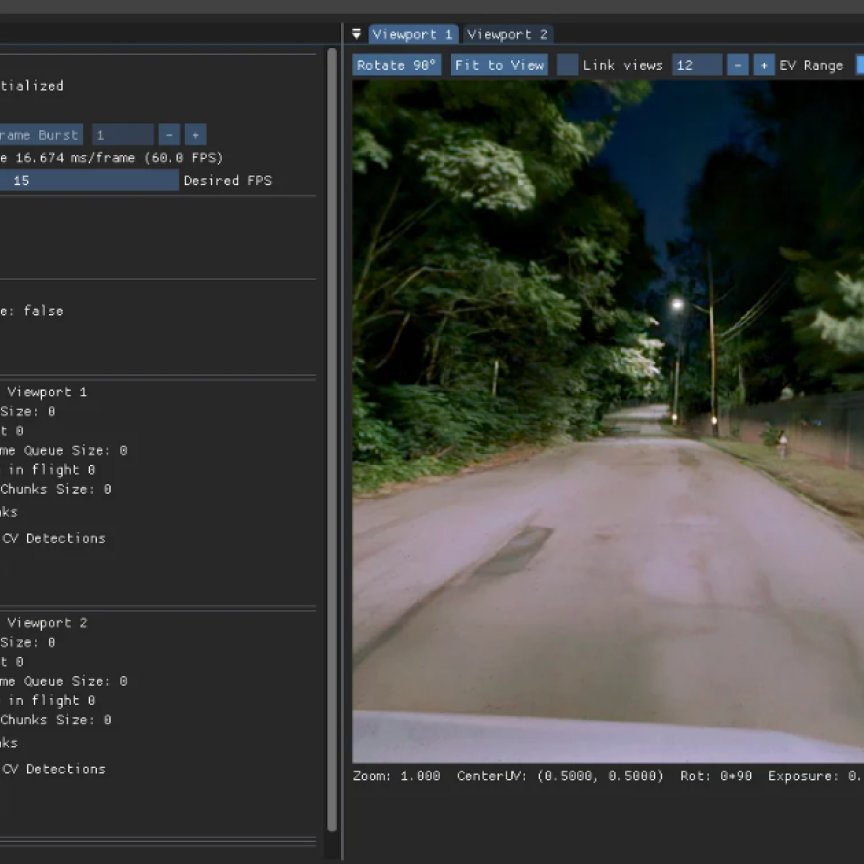Ximea has released a 5K high-speed industrial camera based on Gpixel GMAX0505 sensor.
XIMEA, pioneer in high-speed interfaces, started to deliver new models from high-resolution line of PCI Express based cameras.
The well-known PCI Express high-speed camera line from XIMEA called xiB-64 already contains fast models ranging from 1 Mpix at 3600 Fps to 16 Mpix at 300 Fps. The name of the new addition is CB262 and it offers 26 Megapixels at a remarkable data rate of 150 frames per second when streaming at 10 Bits in RAW image format.
CB262 is utilizing color and mono versions of GMAX0505, the latest CMOS sensor from Gpixel which has picture parameters close to sCMOS performance. Twice the 5K resolution of the world’s smallest global shutter contains 5120 x 5120 pixels with a size of 2.5 µm while still providing a dynamic range of 70 dB in 12bit mode. This makes it suitable for the most demanding applications yet allows to use it with the compact C-mount lenses.
There are various grades of GMAX0505 available and XIMEA is capable to supply multiple camera versions to provide different levels of quality and prices. For overall heat dissipation reduction and even better noise results, the cameras are equipped with fan cooler which can be removed and replaced with heatsink or water cooling system.
Such a high-grade sensor deserves an equally impressive interface and it finds this in the face of PCI Express Gen3 with a bandwidth of 64 Gbits and real data throughput of 7000 MB/s – or more than any other conventional industrial camera can compete with. This comes without the need for bulky and expensive frame grabbers or special complicated software.
Additional benefits of PCIe interface are Direct memory access (DMA) with low CPU load and practically zero latency. The cable length can reach up to 300m through fiber optic and GPIO connectors ensure triggering and synchronization. Optional active EF-mount lens interface enables remote control of aperture, focus and image stabilization. All in a robust housing of 60 x 70 x 40 mm and 250 grams.
Applications examples include: Flat panel inspection, printed circuit board (PCB) examination, persistent stadium, and border security, wide-area surveillance, 360 panorama, cinematography, instant replays, Virtual and Augmented reality (VR, AR), Sports imaging and broadcasting, motion capture and aerial or city mapping.
Color version: https://www.ximea.com/en/products/high-speed-and-high-resolution-camera…
Monochrome version: https://www.ximea.com/en/products/high-speed-and-high-resolution-camera…
MX377 camera
The latest product from XIMEA GmbH is the MX377 camera with one of the largest sCMOS sensors available today. The Gpixel GSENSE6060 with 37.7 million 10µm pixels offers imaging performance on par with the best CCDs (finally) in a highspeed CMOS architecture.
Existing CCDs have thus far remained the go-to technology for scientific measurements, in spite of being unable to match the pace of CMOS innovation. The MX377 camera delivers scientific imaging capabilities with high dynamic range and low noise – at high speed. The MX camera line utilizes a multi-lane PCIe interface which is able to deliver data at the maximum rates the sensor is capable of. The MX377 was also designed with cooling for low light level applications.
The MX377 camera can be provided with several versions of the GSENSE6060 sensor, including frontside (FSI) or backside (BSI) illuminated models.
With the sCMOS BSI sensor, the MX377 reaches a maximum Quantum Efficiency of 95%. Due to the large sensor format of 60 x 60mm, 6k by 6k resolution and 10 μm pixel size, the MX377 is a perfect fit for applications demanding a medium to large format sensor. The output signal from the GSENSE6060 pixels is processed by two readout amplifiers (hi and lo) allowing an HDR readout (2 x 12bit ADC) with up to 90 dB dynamic range. All this with a frame rate of up to 44 fps and a full well capacity of 120 Ke-.
The PCIe interface delivers data with near zero latency from the sensor to the operating computer’s RAM (or GPU) for optimum processing capability and speed. The sensor itself has a number of groundbreaking properties with high dynamic range (FWC close what is expected from CCDs) and dual amplifiers for simultaneous integration of the imagery to deliver high bit depth information on the contents of the image.
The MX377 was designed with a wide range of scientific applications in mind, high energy physics, life science, TEM, astronomy, space situational awareness (SSA) and others. These and other applications will benefit from the combination of high-speed CMOS performance with CCD like data quality in dynamic range and noise, further improved by the availability of either air or water based cooling options to reduce thermal noise for long exposures. This large format sensor and all its capabilities comes in a very compact package, compatible with M95 lenses. The compact CNC machined camera housing is designed with XIMEA’s core principles in mind of remaining small and fast.

